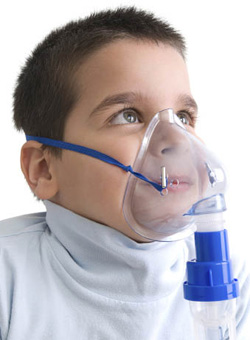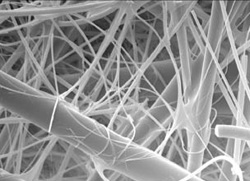In the fifth of a multi-part, in-depth series on air filtration, Dr Iyad Al-Attar gives a call to the HVAC industry leaders, engineers and governments to pledge anew to work for the cause of creating cleaner indoor environment.
 Previous and recent epidemic outbreaks and environmental incidents have highlighted the importance of clean air. Anthrax, SARS and H1N1, to name three, have hurt economies worldwide, as have frequent and dreadful sandstorms that clog filters much earlier than anticipated by laboratory results. Speaking of violent natural phenomena, who can forget the volcanic eruption in Iceland in 2010 and the large-scale disruption it caused in the airlines industry. Also, the ash emitted into the environment by the eruption significantly impacted ocean life, according to certain studies[1].
Previous and recent epidemic outbreaks and environmental incidents have highlighted the importance of clean air. Anthrax, SARS and H1N1, to name three, have hurt economies worldwide, as have frequent and dreadful sandstorms that clog filters much earlier than anticipated by laboratory results. Speaking of violent natural phenomena, who can forget the volcanic eruption in Iceland in 2010 and the large-scale disruption it caused in the airlines industry. Also, the ash emitted into the environment by the eruption significantly impacted ocean life, according to certain studies[1].
Contrary to the general notion, we spend most of our time indoors rather than outdoors, breathing filtered re-circulated air, with the introduction of no or only some amount of fresh air. The dynamics of air filtration, therefore, requires a comprehensive understanding in order to engineer it towards a safe delivery to the indoor space. It needs to be remembered here that air filtration is an engineering process that involves separating and retaining particles within the depth of the filter and/or at its surface.
The first step in doing so is to appropriately select filters. But, how can we do that without physical and chemical characterisation of air contaminants? Such characterisations define what our filters are up against and therefore, filter selections are made based on facts, not on sweeping assumptions.
The second challenge lies in the random structure of filter media, considered the building block of air filters (See Figure 1). Media pleatability, thickness, fibre size distribution and water repellency are only a few examples of the underlying parameters that are often overlooked. Further, filter cartridge design, its resistance to the airflow and, needless to say, filter efficiency always fall under the analytical knife.
Clearly, air filtration is an engineering process as filter performance is highly influenced by several parameters, some of which are time-dependent, which certainly add to the complexity of the assessment.
A third challenge is the fact that air filtration is a microscopic process, which signifies the importance of testing and quality control assurance. Therefore, the involvement of various governments is necessary and inevitable to regulate performance assessments and to ensure that filters are fit to operate in the region’s climate and weather conditions, as sandstorms, excessive humidity and temperature levels may alter the filter performance.
I believe that it is time to address the appropriateness of the international standards to accommodate such conditions and set forth suggested roles to be played, not just by the GCC governments but also by researchers and industry leaders to implement the necessary changes.

Figure 1: The random structure of the air filter media
I truly believe that the time has come to address the preventative nature of air filtration and accord it the due attention it deserves. Today, no one can overlook the critical influence air filter performance has on HVAC systems. However, we also need to realise that conventional filtration measures are yesterday’s tools and that we need to face the environmental challenges with highly advanced technologies.
If we claim that we are friends of the environment, why, then, don’t we respond to its missed calls? In fact, it is the environment that responds to human activities. The results are there for all of us to see: drying lakes and rivers, global warming on the rise and escalating emissions of all sorts. I, therefore, believe that it is time to get out of that “do not disturb” mode we are in and take action.
From my point of view, the minute an emission takes place, we have to worry about the means to filter it. So, why not go to the source and devise emission control measures?
I strongly believe that it takes more than publishing articles to get the job done. I believe that we will have to join hands, efforts and open our hearts and minds to new ideas and learn from one another. That is why I truly believe that the 1st Annual Middle East Indoor Environmental Quality Conference will set the stage for individuals from around the globe to express their views about cleaner indoor air. The conference is a platform for granting air filtration its due focus. Creating an opportunity for engineers and leaders from different industries to gather around the discussion table and thrash out many pressing issues affecting our air quality today is a significant way of renewing our commitment to the long-ignored field of air filtration. The responsibilities are common and our challenges are shared. Let’s confront them together.
Reference:
[1] www.bbc.co.uk/news/science-environment-22045941
Dr Iyad Al-Attar is an Air Filtration Consultant. He can be contacted at: iyad@iyadalattar.com
IMPORTANT NOTE: Unless otherwise referenced, the images used in this article are copyright of the author
Copyright © 2006-2025 - CPI Industry. All rights reserved.